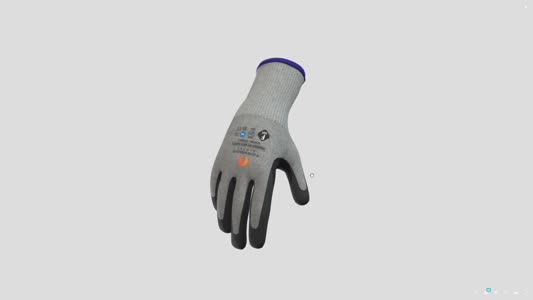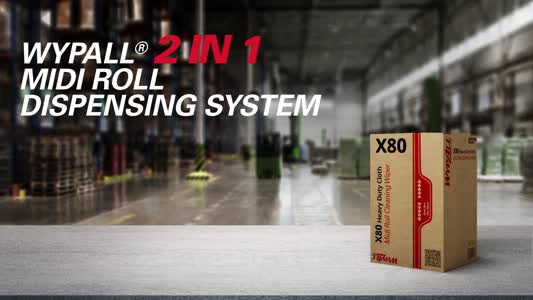
 |
Mark Sennett
Managing Editor |
 |
Kelly Rose
Editor |
| Home> | Handling & Storing | >Driver/Operator Training | >Lifting expectations |
| Home> | Handling & Storing | >Forklift Truck Safety | >Lifting expectations |
Lifting expectations
25 November 2019
Managing lift truck operations for the first time can be daunting, so Laura Nelson explains what health and safety managers need to know when it comes to lift truck safety, compliance and training.
FIRSTLY, THE correct management and supervision are essential for ensuring both safety and compliance. Whether an incident is caused by a lack of operator training or dangerous practices, often poor management and supervision are at the heart of the incident. That’s why the Health and Safety at Work Act etc. 1974 requires employers to provide adequate supervision.
According to the Health and Safety Executive (HSE) Approved Code of Practice (ACOP) L117, which covers training and safe use for rider-operated lift trucks, it is essential that supervisors have enough training and knowledge to recognise safe and unsafe practices and the risks involved, and how to avoid or prevent them.
Yet, every week serious incidents and near misses involving materials handling equipment are reported to the HSE, who will take action for breaches of the Health and Safety at Work Act. Prosecution for company officials can include those responsible for management and supervision. That can, and does, include health and safety managers like you.
Where should you begin?
The Health and Safety at Work Act is broad, with many regulations that are used to manage risk in the workplace across many different industries. And, although adhering to regulations is a legal requirement, when it comes to lift truck operations, the regulations commonly tell you what needs to be achieved, but not how to do so.
It is essential to understand the regulations that affect you and what your responsibilities are, but if you’re new to managing lift truck operations, where should you begin?
Read the right guidance
‘ACOP L117 – Rider Operated Lift Trucks: Operator training and safe use.’ is essential reading for Health and Safety Managers, or anyone else, managing lift truck operations, or indeed any type of materials handling equipment which is rider operated.
ACOPs provide a blueprint for good practice alongside practical examples. This makes your job simpler as it interprets the law for you and makes it easier to understand what the law requires. There is no legal obligation to follow an ACOP, but in the event of an incident, employers can be prosecuted if it can be proven that this guidance was not followed. However, if you do act upon the guidance, you can rest assured that you will usually be doing enough to comply.
The HSE document ‘Lift truck training: advice for employers’ (series code INDG462) is another essential read, but there may also be others that are relevant to your particular industry or operation. The HSE website is a rich resource for this where you can download guidance documents for free.
Understand “how it works”
To be a good manager or supervisor of lift truck operations, a good knowledge of operating and safe working practices is required. You don’t need to know exactly how to use each type of materials handling equipment in your operation to the level that an operator does. However, you should know enough to recognise what’s right and wrong, or what is safe and unsafe.
As a Health and Safety Manager, you should ensure that you have received enough training to be able to understand the risks involved in lift truck operations and how to avoid and prevent them. Moreover, make sure you have the confidence to challenge when you feel that things aren’t being done correctly – it is never worth taking the risk.
Know your responsibilities around training
As previously mentioned, being familiar with the regulations appropriate to your operation is essential for a Health and Safety Manager, as is having enough knowledge of best practice in lift truck operating, as well as related activities such as equipment pre-use inspections.
However, there are other responsibilities for you too. For instance, you should ensure that you’re aware of the operator training regime. What training does each operator require? What should this training cover? When is refresher training required?
It’s essential you understand the three stages of operator training – Basic, Specific Job and Familiarisation.
The three stages of forklift training
-
Basic Operator Training is, as the name suggests, just that. It’s should always take place ‘off the job’. It covers the basic practical skills of operating a lift truck – simple manoeuvring and basic hydraulic controls - and the principles governing safe operation. Operators will also learn about the relevant risks and hazards, as well as important skills such as pre-use inspection and routine basic maintenance, like refuelling or battery care. It is a foundation upon which more specific training can be built.
-
Specific Job Training should take place away from day-to-day work pressures and is where the knowledge and skills learnt during Basic Training are applied to the truck in the operator’s workplace. This training is specific to the job in hand, so will vary vastly from business to business. However, the areas typically covered include machine controls, attachments, working environment and conditions, site rules, load types, inspection and maintenance, and safe practices.
-
Familiarisation Training is the third stage, where closely supervised training introduces the operator to the ‘live work’ environment for the first time. This is where the skills and knowledge that have been gained over the first two stages of training are used in the live workplace. The operator starts with simple tasks and builds towards more complex ones, allowing them to develop their skills and build their confidence. As the ‘off-the-job’ nature of Specific Job Training makes instruction in some elements of the site impossible, this is the time to cover those.
Only once all three stages of training are completed satisfactorily and recorded should an ‘Authorisation to Operate’ be issued. This is issued by the employer and it is their acknowledgement that the individual is qualified and competent to operate specific equipment, within their specific working environment.
The importance of documentation
Health and Safety Managers should understand why training is an ongoing process that continues into the workplace and needs to be appropriately documented.
Those responsible for lift truck operations have important responsibilities surrounding this “paperwork”. For example, records of training, certificates of Basic training, Authorisations to Operate, pre-use inspection records and Records of Thorough Inspection must all be maintained correctly in order to demonstrate compliance in the event of an incident.
Manage general site safety
When it comes to lift truck operations, your role as a Health and Safety Manager is not just about operating standards. Environmental and general safety issues are part of your remit too, so it is important to identify health and safety risks around the site. This could include debris and litter, racking damage, lighting issues, obstructed doorways or stairways, obstructed emergency equipment, spilt liquids, personal protective equipment (PPE) usage, pedestrian segregation, signage, and recharging/refuelling facilities.
You may need to act yourself, or delegate this, report issues or suggest improvements to processes. Tackling these problems in the long term might require pre-shift meetings, spot checks, infringement targets, one-to-one chats, or warnings.
To help you ensure that correct site inspections are conducted, refer to the HSE’s Workplace Transport Checklist. While safety is of course front of mind, during this process you may also take note of risk to infrastructure and equipment which can be addressed to limit damage and improve efficiency.
Keep yourself safe
There are a myriad of health and safety risks in lift truck operations. So, when you’re busy going through the above steps, it is important to remember to keep yourself safe when you’re working around machinery or in the live operating environment.
Remember your own training needs
In addition to all the above, it is important to remember your own training needs too! The Provision and Use of Work Equipment Regulations 1998 (PUWER) stipulates that any employee who supervises or manages the use of work equipment should receive adequate training for the purpose of health and safety, including training in the methods of using the work equipment, any risks and precautions to be taken. So, for both compliance and safety, it’s essential that you are appropriately trained, as well as your lift truck operators.
Luckily, specific training exists which cover managing and supervising materials handling equipment operations. While this article has just briefly introduced you to the essential knowledge needed for Health and Safety Managers looking after lift truck operations, these courses are designed to help equip you with the knowledge of how to identify risks related to MHE in the workplace and apply steps to minimise these. You should ensure you also select a training course that covers what your responsibilities are and how you can best achieve compliance.
Laura Nelson is managing director for RTITB. For more information, visit www.rtitb.com
- Raising the bar
- Why telematics can never replace LGV driver training
- Digital lift truck training tool
- Employers will save with eTruck
- Help increase safety in lift truck operations
- Logistics awards
- RTITB supports operation-wide compliance with new MHE Accreditation
- Safer return to work with RTITB
- Outsourced lift truck training is not always your best option
- 7 reasons to have qualified LGV and lift truck instructors in-house























